Raaga Based Song of the Day: Rasme ulfat ko nibhaayen to nibhaayen kaise….
Raag Madhuvanti, Tal Kaherava
I gave you a song in this Raag in very early stages of this series. In ‘Raaga Based Song Of The Day #5’, I gave you a song in the same raaga and tal: Ajahun na aaye baalma. That, of course had the genius of Shankar Jaikishan though in that they mixed elements of their favourite Raag Bhairavi.
We have completed eighty-eight days of Raaga Based Songs of the Day. Our first post in the series was titled ‘Raaga Based Song Of The Day #1’ and the song was a Mohammad Rafi and Lata Mangeshkar song from the 1970 Shakti Samanta movie Pagla Kahin Ka: Tum mujhe youn bhula na paoge. It is in Raag Jhinjhoti, Tal Kaherava.
Our eighty-eighth post or the last post was titled ‘Raaga Based Song Of The Day #88’ and the song was a Kishore Kumar song from the 1972 Shakti Samanta movie Amar Prem starring Rajesh Khanna and Sharmila Tagore: Kuchh to log kahenge. It is in Raag Khammaj, Tal Kaherava.
This blog has a number of posts on Raaga based songs in Hindi movies titled similarly; for example: ‘The Best Raaga Based Songs in Hindi Movies – Raaga Yaman – Part II’.
In the last eighty-eight days of sharing Raaga based songs of the day, I have given you songs based on Raag Jhinjhoti, Gara, Bhimpalasi, Madhuvanti, Shivaranjani, Bihag, Pahadi, Sarang, Pilu, Bhairavi, Khammaj, Charukesi, Kalyan or Yaman, Desh, Malgunji, Kirwani, Kedar, Bageshri, Megh Malhar, Bhupali, Ahir Bhairav, Malkaush, Mand, Adana, Kafi, Rageshri, Jaunpuri, Tilang, Janasammohini, Chayanat, Shuddha Kalyan, Gaur Sarang, Jogiya, Asavari, Maru Bihag, Durga, Lalit, Puria Dhanashri, Bhinna Sahdja, Sohani, Multani, Patdeep, Jaijaiwanti, Tilak Kamod, Hemant, Basant Mukhari, Gujri Todi, Kalavati, Hamir, Bhatiyar, Gawati, Shyam Kalyan, Gorakh Kalyan, Madhamat Sarang, Manj Khammaj, Darbari Kanada, Vibhas, Shankara, Bahar, Nand and Mian Ki Malhar; making it a total of 61 raagas. The raagas that have been repeated so far are Pahadi, the raaga of my home place in the Himalayas, Maru Bihag, Raag Kirwani, Jhinjhoti, Bhairavi, Gara, Basant Mukhari, Malkauns, Bhairavi, Mand and Sohani. Today, I am repeating Raag Madhuvanti.
Madhuvanti belongs to the Todi Thaat. As you must have guessed it Madhu means honey and the raag is as sweet as honey in sringar ras depicting love and romance. It is an Audhav – Sampurna raag. Rishabh and Dhaivat Varjya in Aaroha, Gandhar Komal, Madhyam Teevra. Rest all are Shuddha Swaras. This raag is to be sung at the fourth prahar of the day, that is late afternoon/evening. It is a fairly modern raag. Its earlier names are Ambika and Madhumalati. It is popular amongst musicians, especially instrumentalists. The nearest Raag is Raag Multani. Using Rishabh and Dhaivat Shuddha in Raag Multani, Raag Madhuvanti appears.
The song I have taken for you today is from the 1973 BR Ishara movie Dil Ki Rahen starring Rakesh Pandey and Rehana Sultan and Sulochana Latkar. It was penned by Naqsh Lyallpuri, composed by Madan Mohan and sung by Lata Mangeshkar.
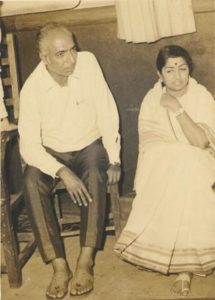
Naqsh Lyallpuri was born on 24 Feb 1928 as Jaswant Rai Sharma in Lyallpuri in what became later as Pakistan. Presently, it is known as Faislalbad. Jaswant was interested in literature but his father wanted him to become a mechanical engineer like him. His mother died when he was only eight. His father remarried and their relationship deteriorated even further. In 1946, he moved to Lahore and started working for Hero Publications. After the partition, his family moved to Lucknow and he assumed the pen-name “Naqsh” – meaning an impression, a mark or a print. It was common for Urdu poets to assume their birth places in their names and Naqsh did the same. In 1951 he moved to Bombay and first worked for the Times of India as a proof-reader. Lyallpuri debuted as a film lyricist with the 1953 film Jaggu, writing the lyrics of “Agar Teri Aankhon Se Aankhein Mila Doon”, rendered by Asha Bhosle and composed by Hansraj Bahl.
He was one of those lyricists who wrote real good Urdu poetry and he looked down upon profanity and belittling the language. Some of my favourite songs of Naqsh Lyallpuri are: Ahal-e-dil youn bhi nibha dete hain, Pyar ka dard hai meetha meetha (Dard 1981), Apni zulfen mere shaano pe bikhar jaane do (Taj Mahal 2005), Jaate ho pardes piya jaate hi khat likhna (Jeena Teri Gali Mein 1990), Maana teri nazar mein tera pyaar ham nahin (Ahista Ahista 1981), Main to har mod par tumako doonga sada (Chetna 1970), Raaz-e-dil hamase kaho ham to koi gair nahin, Tumhen dekhati hoon to lagata hai aise (Tumhaare Liye 1978), and Ye mulaaqaat ik bahaana hai (Khandaan 1979).
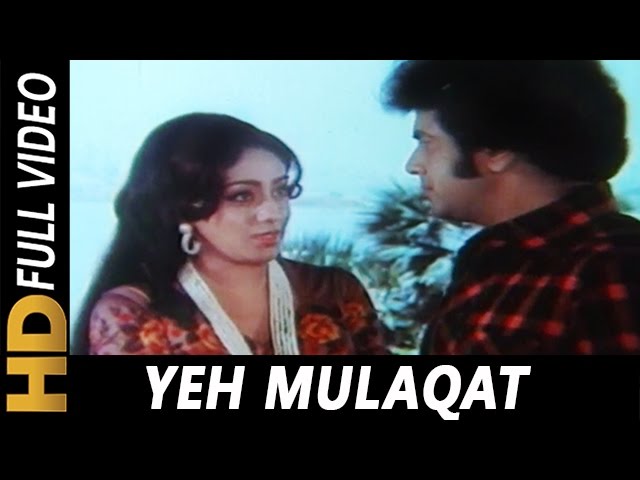
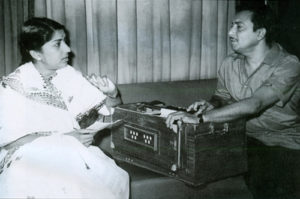
Madan Mohan was born on 25 Jun 1924 at Erbil, Iraqi Kurdistan, where his father Rai Bahadur Chunilal was working as an Accountant General with the Kurdistan Peshmerga forces. Madan Mohan spent the early years of his life in the Middle East. After 1932, his family returned to their home town of Chakwal, then in Jhelum district of Punjab, British India. He joined the Army as a Second Lieutenant in the year 1943. He served there for two years until end of World War II, when he left the Army and returned to Bombay to pursue his musical interests. In 1946, he joined the All India Radio, Lucknow as Programme Assistant, where he came in contact with various artists such as Ustad Faiyaz Khan, Ustad Ali Akbar Khan, Begum Akhtar, and Talat Mahmood.
He was very fond of singing, and so in 1947 he got his first chance to record two ghazals penned by Behzad Lucknawi, Aane Laga Hai Koi Nazar Jalwa Gar Mujhe and Is Raaz Ko Duniya Jaanti Hai. Soon after, in 1948 he recorded two more private ghazals penned by Deewan Sharar, Wo Aaye To Mahfil Mein Ithlaate Huye Aaye and Duniya Mujhe Kahti Hai Ke Main Tujhko Bhoolaa Doon. In 1948, he got his first opportunity to sing a film duet Pinjare Mein Bulbul Bole and Mera Chhotasa Dil Dole with Lata Mangeshkar under composer Ghulam Haider (composer) for the film Shaheed (1948 film), though these songs were never released or used in the film. Between 1948 and 1949, he assisted music composers SD Burman for Do Bhai, and Shyam Sundar in Actress and Nirdosh.
As Music Director, he scored his first big break with the film Aankhen (1950 film) in 1950. He was soon to emerge as a music director par excellence especially for ghazals. Indeed, music director OP Nayyar once said about Madan Mohan that two of his ghazals were better than all that OP Nayyar composed. Some of the best songs of Lata Mangeshkar (she fondly called him “Madan Bhaiyya”) were composed by him on the lyrics of Raja Mehdi Ali Khan and Rajinder Krishan.
Some of my favourite songs of Madan Mohan are: Aaj soch to aansu bhar aaye, Betaab dil ki tamanna yehi hai, Tum jo mil gaye ho (Hanste Zakham 1973), Aapke pehlu mein aa ke ro diye, Naino mein badra chhaye, Jhumka gira re, Tu jahan jahan chalega (Mera Saya 1966), Aapki nazaron ne samajha, Hai isi mein pyaar ki aabru, Vo dekho jala ghar kisi ka (Anpadh 1962), Aapko pyaar chhupane ki buri aadat hai, Tere paas aake mera waqt nikal jaata hai (Neela Akash 1965), Agar mujhase mohabbat hai, Main nigaahen tere chehre se hatayun kaise (Aap Ki Parchhayiyan), Ai mere dil mujhe bata de (Bhai Bhai 1946), Ari vo shokh kaliyon muskara dena vo jab aayen (Jab Yaad Kisi Ki Aati Hai 1967), Baad muddat ke yeh ghadi aayi, Haal-e-dil youn unhe sunaya gaya, Jab jab tumhe bhulaya tum aur yaad aaye, Kisi ki yaad mein duniya ko jhain bhulaye huye, Main teri nazar ka saroor hoon, Phir wohi shaam wohi gham wohi tanhaayi hai, Teri aankh ke aansu pi jaayun, Wo chup rahen to mere dil ke daag jalate hain (Jahan Ara 1964), Hamare baad mehfil mein (Baghi 1953), Bainya na dharo O balma, Ham hain mataa-e-kuchcha-e-bazaar ki tarah, Mai ri main kaase kahun, Tumse kahun ik baat (Dastak, 1970), Bairan neend na aaye mohe (Chacha Zindabad 1959), Basti basti parbat parbat gaata jaaye banjara, Chand madham hai aasman chup hai, Dekh tere Bhagwan ki haalat (Railway Platform 1955), Bhooli hui yaado mujhe itna na satayo, Vo bhooli dastaan lo phir yaad aa gayi (Sanjog 1961), Chanda ja re ja re, Main to tum sang nain mila ke (Manmauji 1962), Chhadi re chhadi kaise gale mein padhi, Dil dhoondata hai fursat ke, Ruke ruke se kadam (Mausam 1975), Chhod kar tere pyar ka daaman, Jao hamane dastaan apni sunaayi, Lag jaa gale ke phir, Naina barse rimjhim rimjhim, Shokh nazar ki bijliyan (Woh Kaun Thi 1964), Do dil toote do dil haare, Doli chadate hi Heer ne bain kiye, Milo na tum to ham ghabraayen, Ye duniya ye mehfil mere kaam ki nahin (Heer Ranjha 1970), Ham chal rahe the wo chal rahe the (Duniya Na Maane 1959), Ham pyar mein jalane waalo ko chain kahan (Jailor 1958), Hamsafar saath apna chhod chale, Tujhe kya sunayun main dilruba (Aakhri Dao 1958), Hamse aaya na gaya, Kaun aay mere man ke dwaare, Meri veena tum bin roye, Tu pyar kare ya thukraye (Dekh Kabira Roya 1957), Har taraf ab yahi afsaane hain, Hai tere saath meri wafa main nahin to kya (Hindustan Ki Kasam 1973), Hoke majbuur mujhe usne bhualaya hoga, Kar chale ham fida, Khelo na mere dil se, Main ye soch kar uske dar se, Zara si aahat hoti hai (Haqeeqat 1964), Husn haazir hai mohabbat ki saza paane ko, Is reshmi paazeb ki jhankar ke sadake, Tere dar pe aaya hoon (Laila Majnu 1976), Ik haseen raat ko dil mera kho gaya, Kabhi ai haqeeqat-e-muntazar, Sapano mein agar mere (Dulhan Ek Raat Ki 1966), Ishq ki garmi-e-jazbaat kise pesh karun. Mere mehboob kahin aur mila kar mujhase, Naghma o sher ki saugat, Rang aur noor ki baraat (Ghazal 1964), Jaa jaa re jaa saajna, Jaana tha hamse door, Unako ye shikayat hai, Youn hasaraton ke daag (Adalat 1958), Kabhi na kabhi kahin na kahin koi na koi to aayega, Mujhe le chalo aaj us jagah, Sawan ke mahine mein (Sharaabi 1964), Koi shikwa bhi nahin koi shikayat bhi nahin (Neend Hamari Khwab Tumhaare 1966), Main paagal mera manwa paagal (Aashiyana 1952), Meri yaad mein tum na aasnu bahana (Madhosh 1951), Na tum bewafa ho na ham bewafa hain (Ek Kali Muskaaye 1958), Sapne mein sajan se do baaten, Do ghadi wo jo paas aa baithe (Gateway Of India 1957), Teri aankhon ke siwa duniya mein rakha kya hai (Chirag 1969), Tumhari zulf ke saaye mein shaam kar loonga (Naunihaal 1967), Tu mere saamne hai teri zulfen hain khuli (Suhagan, 1964), and Vo jo milate the kabhi hamsase deewano ki tarah (Akeli Mat Jaiyo 1963).
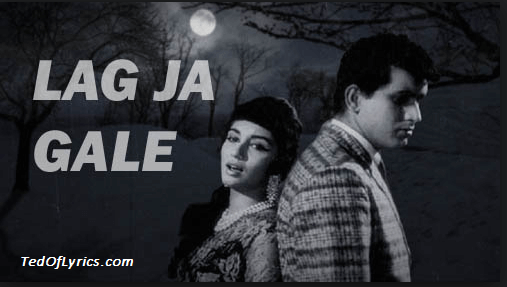
Before we actually take up the song, first, lets take up the value added learning of today. From the last eight times we started learning about some of the leading personalities in Indian Classical Music or Shastriya Sangeet. The first one that we took up was Ustaad Asad Ali Khan, the finest Rudra Veena player in the country. Then we took up Pandit Hari Parsad Chaurasia, the greatest Bansuri player in the country. Then we talked about Ali Akbar Khan, the greatest Sarod player in the country. Then we took up Pandit Ravi Shankar, the greatest Sitar player in the world. Then we took up the greatest classical singer in the country (of Carnatic tradition): MS Subbulakshmi. Then, we took up the greatest classical singer in the country (of Hindustani tradition): Pandit Bhimsen Joshi. Then, we learnt about the Shehnai maestro Ustad Bismillah Khan. And finally, we learnt about Annapurna Devi, a great Surbahar (bass sitar) player of Hindustani Classical Music. Tonight, we shall take up Pandit Shiv Kumar Sharma, the grestest Santoor player in the country
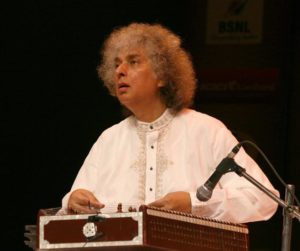 Pandit Shiv Kumar Sharma was born to Uma Dutt Sharma on 13 Jan 1938 in Jammu. His father started teaching him vocals and tabla when he was only five. Uma Dutt Sharma did extensive research on Santoor and started teaching his son Santoor by the age of 13. He gave his first public performance in Bombay in 1955, at the age of 17. Pandit Shiv Kumar Sharma is credited with having made Santoor as a popular Indian classical instrument world-wide. He composed the background music for V Shantaram’s Jhanak Jhanak Payal Baaje in 1956. He gave his first solo performance in 1960.
Pandit Shiv Kumar Sharma was born to Uma Dutt Sharma on 13 Jan 1938 in Jammu. His father started teaching him vocals and tabla when he was only five. Uma Dutt Sharma did extensive research on Santoor and started teaching his son Santoor by the age of 13. He gave his first public performance in Bombay in 1955, at the age of 17. Pandit Shiv Kumar Sharma is credited with having made Santoor as a popular Indian classical instrument world-wide. He composed the background music for V Shantaram’s Jhanak Jhanak Payal Baaje in 1956. He gave his first solo performance in 1960.
He has composed music for many Hindi films in collaboration with Hariprasad Chaurasia starting with Silsila (1980). They came to be known as the Shiv-Hari music duo. Some of the movies they composed music for were big musical hits, such as Faasle (1985), Chandni (1989), Lamhe (1991), and Darr (1993).
Fascinatingly, he has played tabla in the song Mose Chhal Kiye Jaye Haay Re Haay Dekho Saiyan Beimaan. While he started his career playing the tabla, Shiva Kumar Sharma had given up the instrument to focus on the santoor. It was RD Burman who convinced him to play the tabla for this song. He did not play the tabla again for any other Hindi film song. He has been awarded the Sangeet Natak Akademi Award in 1986, the Padma Shri in 1991, and the Padma Vibhushan in 2001.
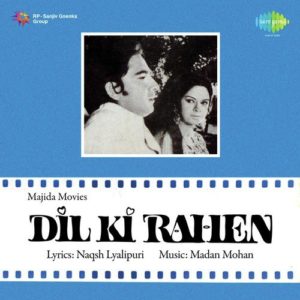 Lastly, a word about the movie from where this song has been taken by me. The 1973 movie Dil Ki Rahen was produced by Syed Kausar Hussain and directed by BR Ishara and starred Rakesh Pandey and Rehana Sultan and Sulaochana. The film’s print allegedly got damaged as time passed by. Hence, the movie cannot be produced in any viewing format.
Lastly, a word about the movie from where this song has been taken by me. The 1973 movie Dil Ki Rahen was produced by Syed Kausar Hussain and directed by BR Ishara and starred Rakesh Pandey and Rehana Sultan and Sulaochana. The film’s print allegedly got damaged as time passed by. Hence, the movie cannot be produced in any viewing format.
Please enjoy in Raag Madhuvanti, Taal Kaherava, Lata Mangeshkar sing a composition of Madan Mohan on the lyrics of Naqsh Lyallpuri in the 1973 BR Ishara movie: Rasme ulfat ko nibhaayen to nibhaayen kaise…..
रस्म-ए-उल्फ़त को निभाएं तो निभाएं कैसे
हर तरफ़ आग है दामन को बचाएं कैसे
रस्म-ए-उल्फ़त को निभाएं…
दिल की राहों में उठते हैं जो दुनिया वाले -२
कोई कह दे के वोह दीवार गिराएं कैसे -२
रस्म-ए-उल्फ़त को निभाएं…
दर्द में डूबे हुए नग़मे हज़ारों हैं मगर -२
साज़-ए-दिल टूट गया हो तो सुनाए कैसे -२
रस्म-ए-उल्फ़त को निभाएं…
बोझ होता जो ग़मों का तो उठा भी लेते -२
ज़िंदगी बोझ बनी हो तो उठाएं कैसे -२
रस्म-ए-उल्फ़त को निभाएं…
We have intended to learn about Raaga based music whilst we entertain ourselves with Raaga based songs. So, lets, once again, take stock of our collective learning so far:
- On the first day we learnt about the Raaga system devised by Pandit Vishnu Narayan Bhatkhande, which is the prevalent system in Hindustani Classical Music and based on ten Thaats.
- On the second day we learnt about Tal or Taal.
- On the third day we learnt about characteristics of Raagas that included Swar, Jati, Thaat, Arohana and Avarohana, Vadi, Samvadi and Pakad.
- On the fourth day, we learnt about Sargam.
- On the fifth day, we learnt about notations used in Indian classical music or simply Swar Lipi.
- On the sixth day, we learnt about the Ras (sentiments) that Raagas evoke.
- On the seventh day, we learnt about various types of Swar: Shuddha, Achal, Vikrut, Komal and Teevra.
- On the eighth day, we learnt the parts of a composition in Indian Classical Music.
- On the ninth day, we learnt the names of some of the popular instruments used in Indian Classical Music.
- On the tenth day, we learnt about the sources of names of Raagas.
- On the eleventh day, we learnt about why Bhairavi is the first raag to be taught to beginners and also why it is the last in a performance.
- On the twelfth day, we learnt about Khammaj Thaat.
- On the thirteenth day, we learnt about Tal Punjabi Theka or Sitarkhani.
- On the fourteenth day, we learnt about Alap.
- On the fifteenth day, we learnt about List of Raagas (Raagmala) in my favourite book: Sri Guru Granth Sahib.
- On the sixteenth day, we learnt about tips for raaga identification.
- On the seventeenth day, we learnt the basics of Gharana system.
- On the eighteenth day, we learnt about Filmi Sangeet.
- On the nineteenth day, we learnt about the commonest Tal in Raagas: Tintal.
- On the twentieth day, we learnt about the Kafi Thaat.
- On the twenty-first day, we learnt a little more in detail about the classification of Raagas.
- On the twenty-second day, we learnt the essential differences between Bhairavi and Bhairav.
- On the twenty-third day, we learnt a little more in detail about the Jati or Jaati of a raaga.
- On the twenty-fourth day, we learnt details of Thaat Bilawal, the most basic thaat in the Bhatkhande’s system of raagas.
- On the twenty-fifth day, we learnt about Tintal.
- On the twenty-sixth day, we learnt in detail about the Raaga – Samay linkage.
- On the twenty-seventh day, we learnt about Lehar.
- On the twenty-eighth day, we learnt about the history of the Hindustani Music.
- On the twenty-ninth day, we learnt about Dhrupad.
- On the thirtieth day, we learnt about Rupaktal that I was introduced to, a few months back, by my friend Anand Desai.
- On the thirty-first day, we learnt about Khayal.
- On the thirty-second day, we learnt about Thumri.
- On the thirty-third day, we learnt about Tappa.
- On the thirty-fourth day, we learnt about Tarana.
- On the thirty-fifth day, we learnt about Tal Dipchandi (Moghali).
- On the thirty-sixth day, we learnt about Tabla.
- On the thirty-seventh day, we learnt about Kirtan.
- On the thirty-eighth day, we learnt about Pakhawaj.
- On the thirty-ninth day, we learnt about Hori.
- On the fortieth day, we learnt about Dadra.
- On the forty-first day, we learnt about Kajri.
- On the forty-second day, we learnt about Chaiti.
- On the forty-third day, we learnt about Sarangi.
- On the forty-fourth day, we learnt about Shehnai.
- On the forty-fifth day, we learnt about Sarod.
- On the forty-sixth day, we learnt about Bansuri.
- On the forty-seventh day, we learnt about Ektal and Tanpura.
- On the forty-eighth day, we learnt about Veena.
- On the forty-ninth day, we repeated our learning of Veena with a small excitement added.
- On the fiftieth day, we learnt about Dilruba/Esraj.
- On the fifty-first day, we learnt about Jaltarang.
- On the fifty-second day we learnt about Qawwali.
- On the fifty-third day, we learnt about Sitar.
- On the fifty-fourth day, we learnt about Surbahar.
- On the fifty-fifth day, we learnt about Harmonium.
- On the fifty-sixth day, we learnt about Santoor.
- On the fifty-seventh day, we learnt about Swarmandal.
- On the fifty-eighth day, we learnt about the Shruti Box.
- On the fifty-ninth day, we learnt about Alankar.
- On the sixtieth day, we learnt about singing in Aakaar.
- On the sixty-first day, we learnt about the Classification of Indian Musical Instruments.
- On the sixty-second day, we learnt a little about Carnatic Music.
- On the sixty-third day, we learnt about Natya Shastra.
- On the sixty-fourth day, we learnt about evolution of musical instruments in India down the ages.
- On the sixty-fifth day, we learnt about Riyaaz.
- On the sixty-sixth day, we looked at a list of Raagas in Hindustani Classical Music.
- On the sixty-seventh day, we learnt about the health benefits of raagas.
- On the sixty-eighth day, we learnt a little more comprehensively about the moods and emotions that raagas evoke.
- On the sixty-ninth day, we learnt about a mobile application to help identify raagas.
- On the seventieth day, we learnt about Melakarta Raagas.
- On the seventy-first day, we learnt about Sangita Makarand.
- On the seventy-second day, we learnt about TaalMala an Android application for personalized accompaniment of musical instruments during Riyaaz or even during Concert.
- On the seventy-third day, we learnt about Indian Classical Ragas, an Android application for mobile phones.
- On the seventy-fourth day, we learnt about Saregama Classical, another application for Classical Raagas.
- On the seventy-fifth day, we learnt about a free online service available to learn Indian Classical Music.
- On the seventy-sixth day, we learnt about List of Hindustani Classical Musical Festivals in India and Abroad.
- On the seventy-seventh day, we learnt about List of Carnatic Musical Festivals in India and Abroad.
- On the seventy-eighth day, we learnt about Jhaptal.
- On the seventy-ninth day, we learnt about Ektal.
- On the eightieth day, we learnt about Tivra Tal.
- On the eighty-first day, we learnt about the greatest Rudra Veena player ever: Ustaad Asad Ali Khan.
- On the eighty-second day, we learnt about the greatest Bansuri player alive: Pandit Hariprasad Chaurasia.
- On the eighty-third day, we learnt about the best Sarod player in the country: Ustaad Ali Akbar Khan.
- On the eighty-fourth day, we learnt about the greatest Sitar player in the world: Pandit Ravi Shankar.
- On the eighty-fifth day, we learnt about the greatest Indian vocalist of Carnatic tradition: MS Subbulakshmi.
- On the eighty-sixth day, we not just learnt about the greatest vocalist of Hindustani tradition: Pandit Bhimsen Joshi but also learnt about Tal Hinch.
- On the eighty-seventh day, we learnt about the Shehnai maestro Ustaad Bismillah Khan.
- On the eighty-eighth day, we learnt about Annapurna Devi, the greatest Surbahar player in India.
- And today, on the eighty-ninth day, we learnt about Pandit Shiv Kumar Sharma, the greatest Santoor Player in the country.
There is much more still to be learnt and enjoyed.
Please stay tuned!
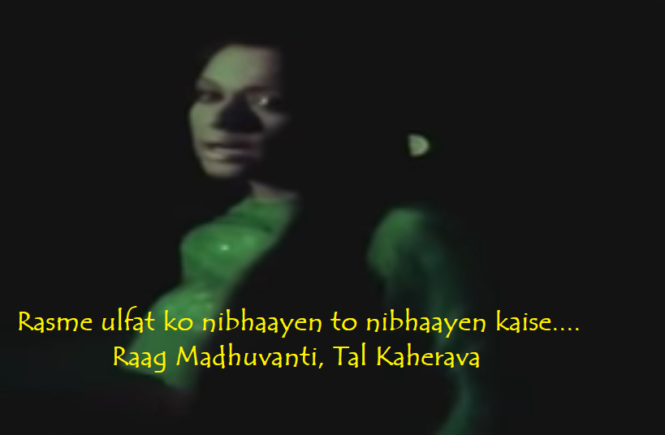
Thanks a lot sir
Welcome Avinash
Awesome blog and website! Sunbyname is a great music lover. I am as well. Classical, Ghazal, Filmi music, anything Indian. I welcome him to email me.
Thank you. Shall do in a few days as busy these days with my mother’s first barsi.